Topics
- Page Path
-
- HOME
- TOPICS
- Topics
- Topics
-
- Adolescence Medicine (3)
- Allergy (53)
- Cardiology (76)
- Critical Care Medicine (8)
- Developmental and Behavioral Medicine (19)
- Emergency Medicine (5)
- Endocrinology (53)
- Gastroenterology (57)
- General Pediatrics (38)
- Genetics and Metabolism (22)
- Hematology (12)
- Immunology (12)
- Infection (66)
- Neonatology (Perinatology) (108)
- Nephrology (Genitourinary) (49)
- Neurology (88)
- Nutrition (26)
- Oncology (15)
- Neurobehavior (12)
- Pulmonology (26)
- Rheumatology (2)
- Other (30)
- Review Article
- Critical Care Medicine
- Pediatric postintensive care syndrome: high burden and a gap in evaluation tools for limited-resource settings
- Chanapai Chaiyakulsil, Rapee Opasatian, Paweethida Tippayawong
- Clin Exp Pediatr. 2021;64(9):436-442. Published online December 18, 2020
-
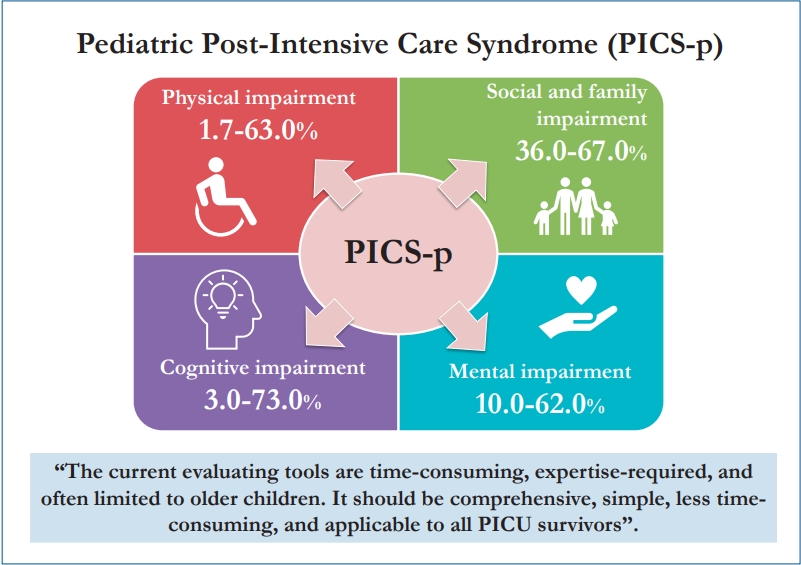
Pediatric postintensive care syndrome has high impact and burden and can affect a child’s life for decades. The early evaluation and detection of such problems require a simple and less time-consuming surveillance tool. Current evaluation tools can be difficult and strenuous for areas with limited resources. Thus, a new simple tool is required for the early detection and intervention of postintensive care syndrome in critically ill children
- Letter to the Editor
- General Pediatrics
- Skipping breakfast is associated with lifestyle habits among Japanese pupils
- Jun Kohyama
- Clin Exp Pediatr. 2021;64(8):433-435. Published online November 4, 2020
-
Question: Breakfast is important; however, adolescents are increasingly skipping it.
Finding: Skipping breakfast is independently associated with sleepiness, physical inactivity, dinner irregularity, screen time on school days, poor academic performance, after-school activity, and decreased sleep duration before school day.
Meaning: Reducing screen time on school days, after-school activity, and irregular dinner habits might decrease breakfast skipping, resulting in decreased sleepiness and improved academic performance.
- Clinical note
- Nephrology (Genitourinary)
- Extracorporeal membrane oxygenation with systemic heparinization as a rescue therapy for acute life-threatening pulmonary thromboembolism complicating nephrotic syndrome
- Kyusang You, So Mi Kim, Dongmin Kim, Kyoungmin Ryu, Mee Jeong Lee
- Clin Exp Pediatr. 2021;64(8):430-432. Published online November 16, 2020
-

Question: How would you treat acute life-threatening pulmonary thromboembolism occurring in nephrotic patients?
Finding: A 16-year-old woman with minimal change-associated nephrotic syndrome presented with cardiac arrest caused by an acute bilateral pulmonary thromboembolism. Her hemodynamics stabilized with resolution of thrombi while on venoarterial extracorporeal membrane oxygenation (ECMO) and systemic heparinization.
Meaning: In selected cases, ECMO with systemic heparinization may rescue patients from acute life-threatening pulmonary thromboembolism even without reperfusion therapy.
- Original Article
- Neonatology (Perinatology)
- Effects of carnosine and hypothermia combination therapy on hypoxic-ischemic brain injury in neonatal rats
- Jun Chul Byun, Seong Ryong Lee, Chun Soo Kim
- Clin Exp Pediatr. 2021;64(8):422-428. Published online February 24, 2021
-
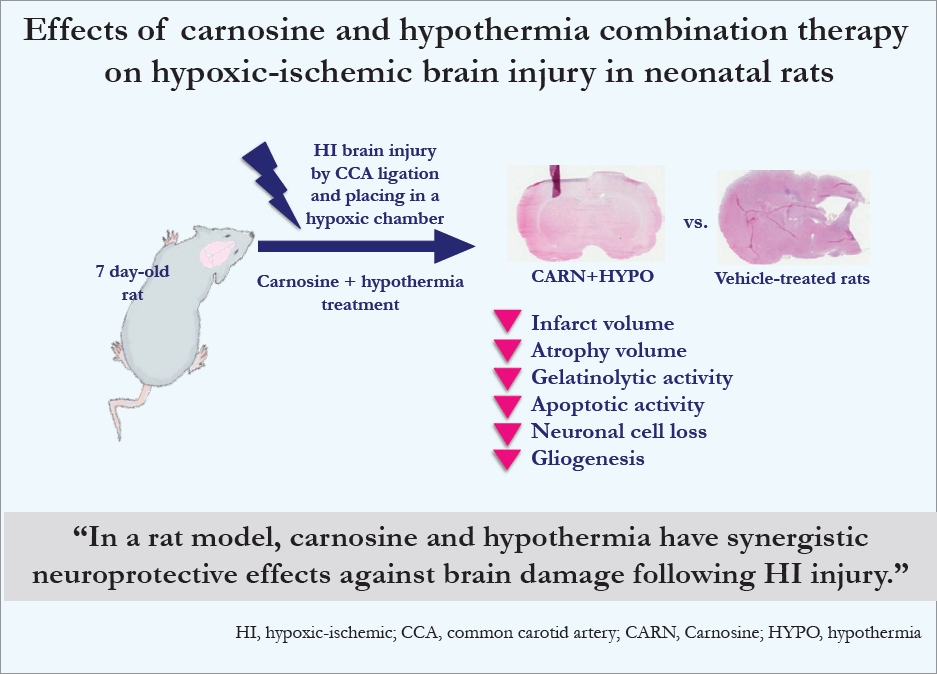
Question: How can we further improve the neuroprotective effects of hypothermia in newborns with hypoxic-ischemic (HI) brain injury?
Finding: Combination carnosine and hypothermia therapy effectively reduced brain damage in neonatal rats. The in situ zymography, terminal deoxynucleotidyl transferase-mediated dUTP nick end-labeling assay, and immunofluorescence study results showed that neuroprotective effects were achieved with combination therapy only.
Meaning: Carnosine and hypothermia have synergistic neuroprotective effects against brain damage following HI injury
- Infection
- Prevalence of methicillin-resistant Staphylococcus aureus in Iranian children: a systematic review and meta-analysis
- Farhad Sarrafzadeh, Seyed Mojtaba Sohrevardi, Hamid Abousaidi, Hossein Mirzaei
- Clin Exp Pediatr. 2021;64(8):415-421. Published online November 20, 2020
-
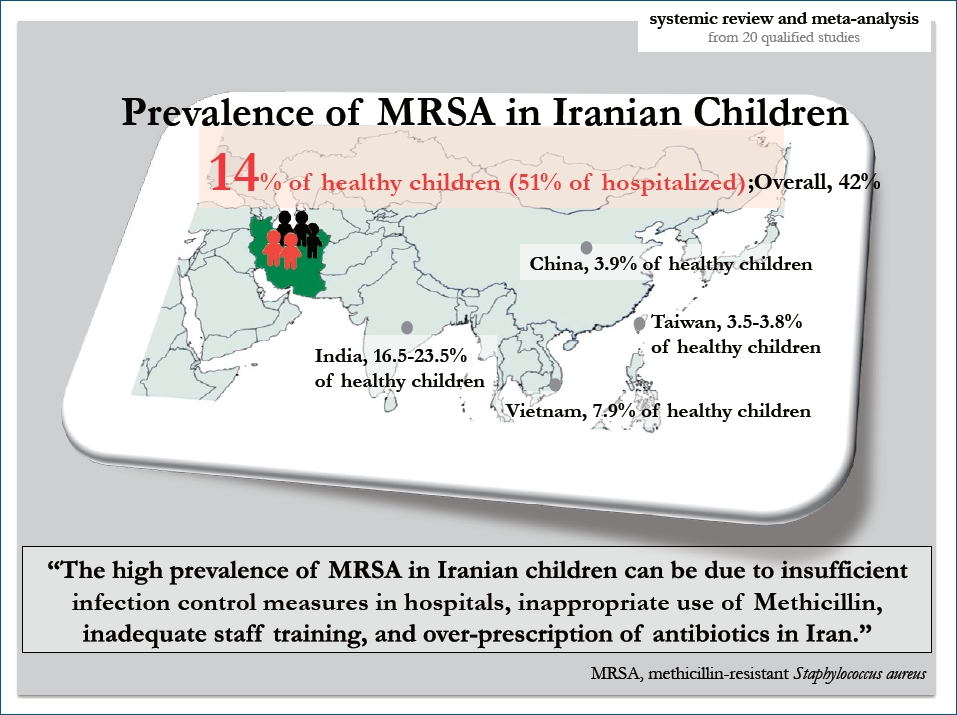
The pooled prevalence of methicillin-resistant Staphylococcus aureus (MRSA) was 42% among culture-positive cases of S. aureus, 51% in hospitalized children, and 14% in healthy children. The high prevalence of MRSA in Iranian children may be due to insufficient infection control measures in hospitals, inappropriate use of methicillin, inadequate staff training, and over-prescription of antibiotics in Iran.
- Allergy
- Influence of age at complementary food introduction on the development of asthma and atopic dermatitis in Korean children aged 1–3 years
- Jihyun Lee, Meeyong Shin, Bora Lee
- Clin Exp Pediatr. 2021;64(8):408-414. Published online November 1, 2020
-
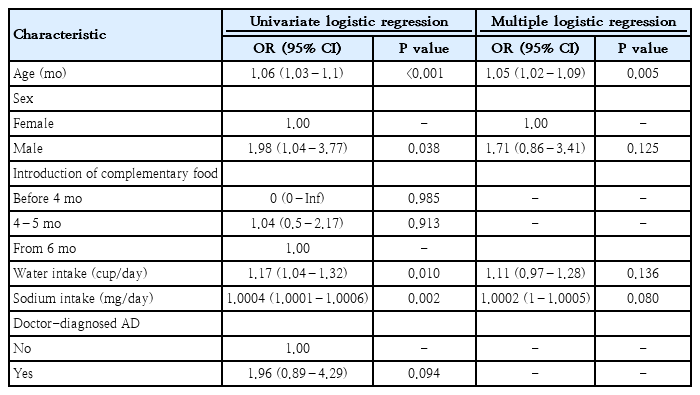
Question: Is age at the time of complementary food introduction associated with asthma and atopic dermatitis (AD) in early childhood?
Finding: We found no significant association between age at the time of complementary food introduction and the incidence of AD and asthma in Koreans aged 1–3 years.
Meaning: Our findings suggest that the influence of individual allergenic foods on the development of AD and asthma should be clarified.
- Editorial
- Nephrology (Genitourinary)
- Pulmonary thromboembolism: a rare but life-threatening complication of nephrotic syndrome
- Heeyeon Cho
- Clin Exp Pediatr. 2021;64(8):406-407. Published online February 4, 2021
-
Pulmonary thromboembolism (PTE) is often diagnosed in children with nephrotic syndrome. Massive PTE can cause hemodynamic instability, right ventricular failure, and circulatory collapse. Extracorporeal membrane oxygenation can be used for massive PTE as a method of hemodynamic support and adjunct to surgical embolectomy.
- Review Article
- Hematology
- Thrombosis and severe acute respiratory syndrome coronavirus 2 vaccines: vaccine-induced immune thrombotic thrombocytopenia
- Young Shil Park
- Clin Exp Pediatr. 2021;64(8):400-405. Published online June 30, 2021
-
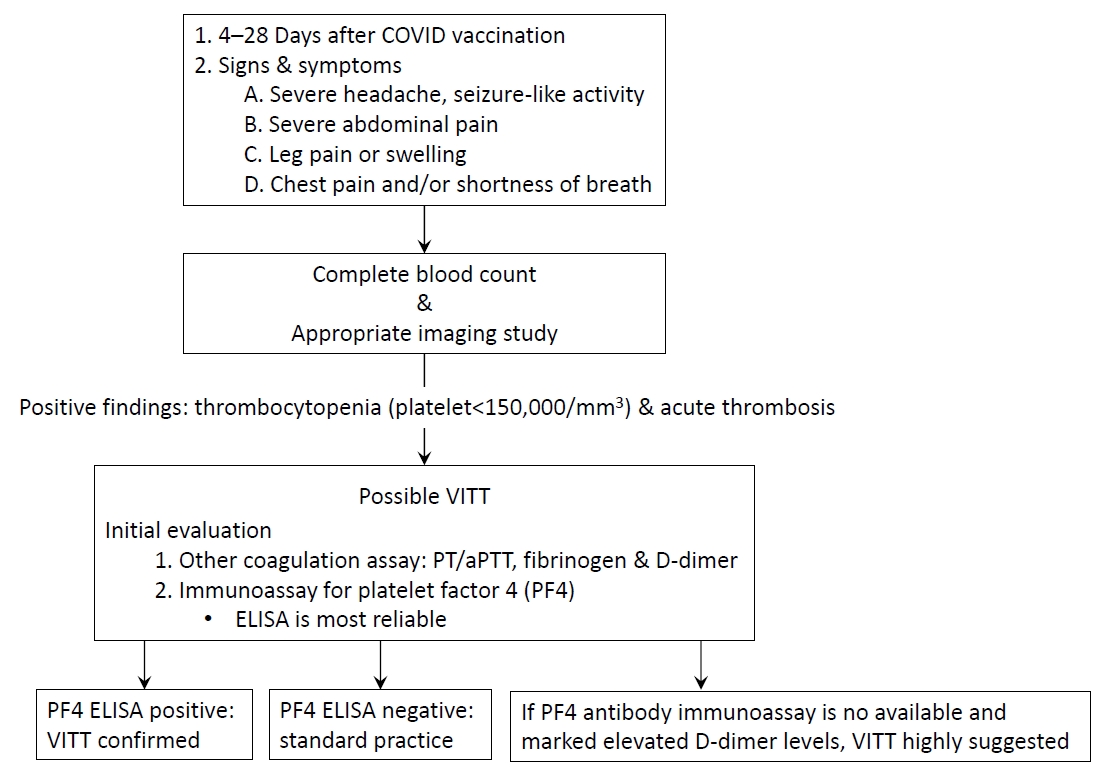
· Thrombosis and thrombocytopenia occurring within 4–28 days after severe acute respiratory syndrome coronavirus 2 vaccination require attention.
· The terms vaccine-induced immune thrombotic thrombocytopenia (VITT) and thrombosis with thrombocytopenia syndrome (TTS) are used.
· VITT is pathogenetically similar to heparin-induced thrombocytopenia.
· VITT/TTS could be associated with the development of platelet-activating anti-platelet factor 4 antibodies.
· For suspected VITT/TTS, early treatment decisions (intravenous immunoglobulin, non-heparin anticoagulant, and avoidance of platelet transfusions) are important.
- Allergy
- Food allergies and food-induced anaphylaxis: role of cofactors
- Meeyong shin
- Clin Exp Pediatr. 2021;64(8):393-399. Published online November 12, 2020
-
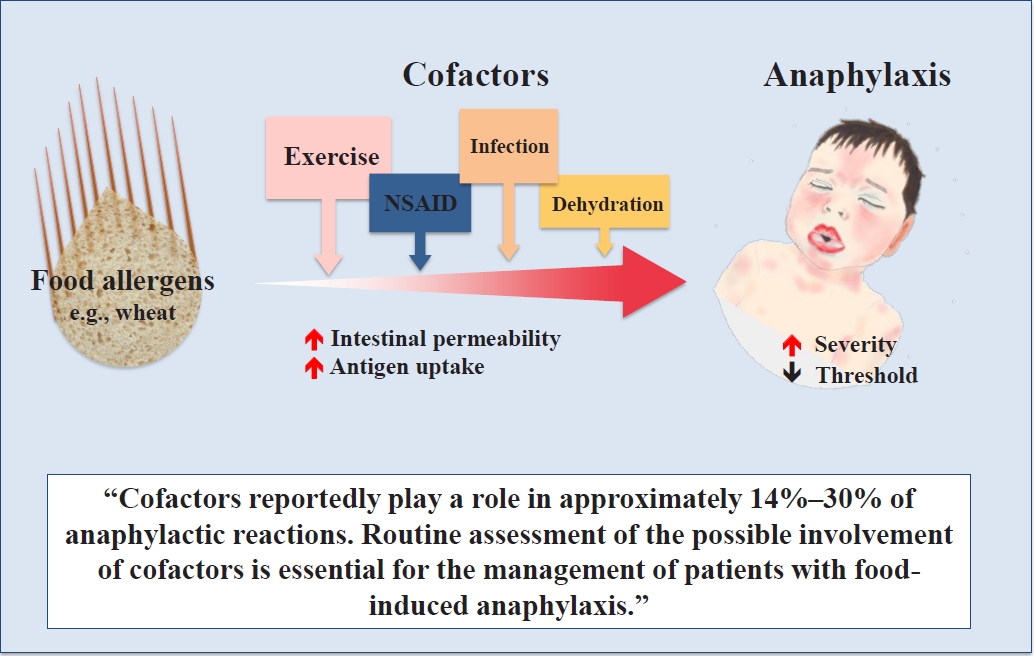
Question: What are the roles of cofactors in food allergies and food-induced anaphylaxis?
Finding: Cofactors reportedly play a role in approximately 14%–30% of anaphylactic reactions. Cofactors such as exercise, infection, nonsteroidal anti-inflammatory drugs, dehydration, and alcohol can increase intestinal permeability and antigen uptake, thereby causing allergic symptoms.
Meaning: Routine assessment of the possible involvement of cofactors is essential for the management of patients with food-induced anaphylaxis.
- Neurology
- Is it really a seizure? The challenge of paroxysmal nonepileptic events in young infants
- Seung Yeon Jung, Joon Won Kang
- Clin Exp Pediatr. 2021;64(8):384-392. Published online September 18, 2020
-
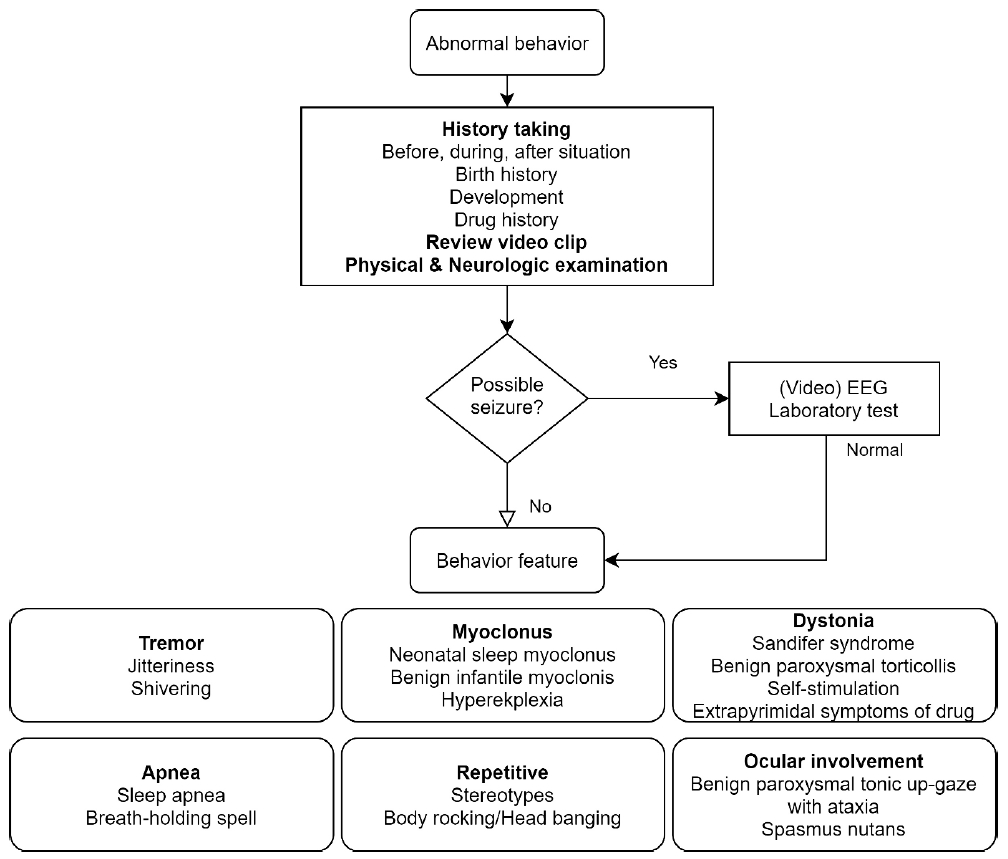
Paroxysmal nonepileptic events (PNE) comprise of a variety of nonepileptic behaviors and are divided into various types. A more accurate diagnosis is possible by examining the video clip provided by the caregiver. In infants, physiologic PNE accounts for the majority of the PNE. It is important to exclude epilepsy, for which blood tests, electroencephalography, and imaging tests can facilitate differential...
- Allergy
- Prevalence, comorbidities, diagnosis, and treatment of nonallergic rhinitis: real-world comparison with allergic rhinitis
- Hye Yung Yum, Eun Kyo Ha, Yoon Ho Shin, Man Yong Han
- Clin Exp Pediatr. 2021;64(8):373-383. Published online August 10, 2020
-

Rhinitis is among the most common respiratory diseases in children. Nonallergic rhinitis, which involves nasal symptoms without evidence of systemic allergic inflammation or infection, is a heterogeneous entity with diverse manifestations and intensities. Nonallergic rhinitis accounts for 16%–89% of the chronic rhinitis cases, affecting 1%–50% (median 10%) of the total pediatric population. The clinical course of nonallergic rhinitis is generally...
- Letter to the Editor
- General Pediatrics
- Hyperinflammatory syndrome in children during the coronavirus disease 2019 pandemic in sub-Himalayan region
- Seema Sharma, Shikha Verma, Isha Bhatia, Ravinder Singh, Mohit Bajaj, Milap Sharma
- Clin Exp Pediatr. 2021;64(7):370-372. Published online May 11, 2021
-
Question: Is there an increase in patients with hyperinflammatory syndrome during the coronavirus disease 2019 pandemic?
Finding: We found 10 patients with hyperinflammatory syndrome with poor outcome during a period of 2 months in a single tertiary care centre.
Meaning: Pediatricians who come across patients with muco cutaneous manifestations and multiorgan involvement should consider hyperinflammatory syndrome. Early recognition and prompt treatment of such patients may result in promising outcome.
- Original Article
- Emergency Medicine
- Comparison of clinical features and laboratory findings of coronavirus disease 2019 and influenza A and B infections in children: a single-center study
- Meraj Siddiqui, Ayşe Gültekingil, Oğuz Bakırcı, Nihal Uslu, Esra Baskın
- Clin Exp Pediatr. 2021;64(7):364-369. Published online May 18, 2021
-
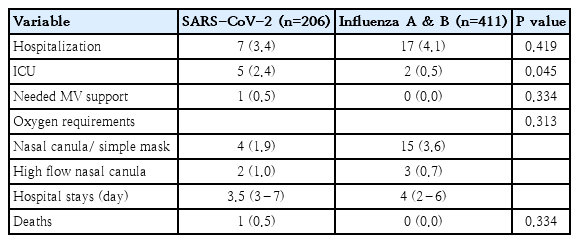
Question: What are the differences between coronavirus disease 2019 (COVID-19) and influenza infections in children?
Finding: Pediatric COVID-19 patients predominantly exhibited respiratory and/or gastrointestinal symptoms, neurological manifestations, olfactory/gustatory dysfunction, elevated monocytes, mildly elevated C-reactive protein, and unilateral or diffuse abnormalities on chest x-ray. Patients with underlying medical conditions had higher intensive care unit admission rates and should be followed closely.
Meaning: The clinical presentations of pediatric COVID-19 patients varied from asymptomatic/mild to severe.
- Nephrology (Genitourinary)
- Expression profiling of cultured podocytes exposed to nephrotic plasma reveals intrinsic molecular signatures of nephrotic syndrome
- Stuti Panigrahi, Varsha Chhotusing Pardeshi, Karthikeyan Chandrasekaran, Karthik Neelakandan, Hari PS, Anil Vasudevan
- Clin Exp Pediatr. 2021;64(7):355-363. Published online November 1, 2020
-

Question: Is it possible to classify nephrotic syndrome (NS) through gene expression profiling of podocytes exposed to NS plasma?
Finding: Our data showed different expression profiles in podocytes exposed to nephrotic plasma from different clinical groups, suggesting the molecular stratification of patients into intrinsic subtypes.
Meaning: Transcriptome profiling of podocytes treated with NS plasma can stratify patients into intrinsic subtypes and provide insight into the molecular mechanisms of podocyte injury.
- Urinary neutrophil gelatinase-associated lipocalin: a marker of urinary tract infection among febrile children
- Ji Hyun Moon, Kee Hwan Yoo, Hyung Eun Yim
- Clin Exp Pediatr. 2021;64(7):347-354. Published online October 17, 2020
-

Question: Reliably diagnosing urinary tract infection (UTI) in febrile children is often difficult. Can urinary neutrophil gelatinase-associated lipocalin (uNGAL) better predict UTI and acute pyelonephritis (APN) than serum C-reactive protein (CRP) and white blood cell (WBC) count?
Finding: uNGAL better facilitated the prediction of UTI and APN, than serum CRP and WBC counts in febrile children.
Meaning: uNGAL is a suitable biomarker for UTI and APN in febrile children.
- Developmental and Behavioral Medicine
- Is meconium exposure associated with autism spectrum disorders in children?
- Ensiyeh Jenabi, Erfan Ayubi, Salman Khazaei, Saeid Bashirian, Mojtaba Khazaei
- Clin Exp Pediatr. 2021;64(7):341-346. Published online October 4, 2020
-

• Meconium exposure is weakly associated with an increased risk of autism spectrum disorder (ASD) development in children.
• More evidence based on large prospective cohort studies is required to conclude whether meconium exposure is associated with an increased risk of ASD.
- Editorial
- Neurology
- Recent trends in autism spectrum disorder research using text mining of PubMed: importance of early detection
- Seung Soo Kim
- Clin Exp Pediatr. 2021;64(7):339-340. Published online November 9, 2020
-
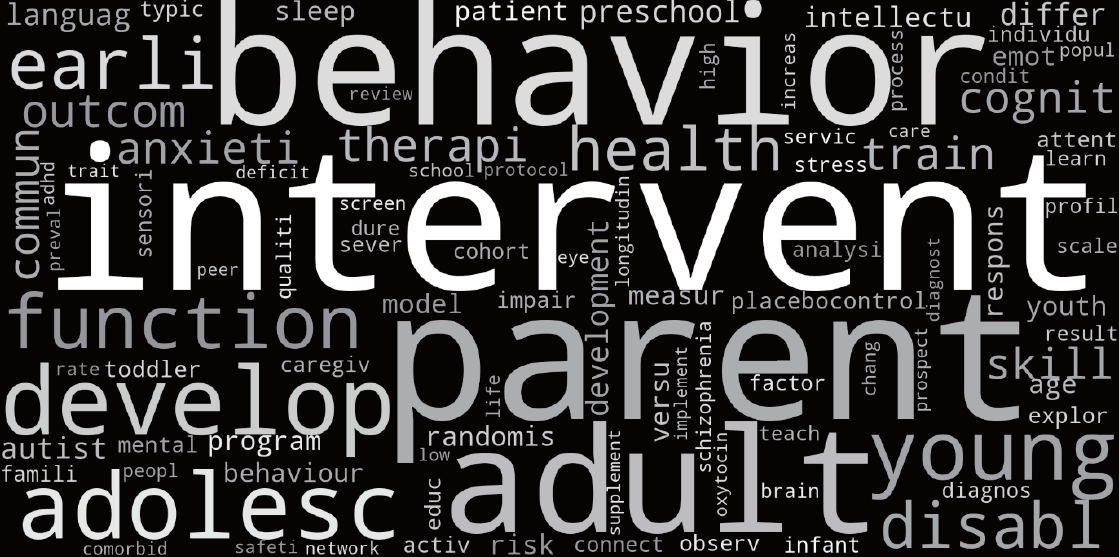
Behavioral therapy, the most widely proven intervention for the core symptoms of autism spectrum disorder (ASD), is required for life for individuals with ASD. Parent involvement, early detection, and early therapy play important roles. We must organize the risk factors for ASD and develop a screening tool that can be easily applied in the clinical, daycare, or school setting.
- Review Article
- Infection
- Updates on the coronavirus disease 2019 vaccine and consideration in children
- Hyun Mi Kang, Eun Hwa Choi, Yae-Jean Kim
- Clin Exp Pediatr. 2021;64(7):328-338. Published online June 21, 2021
-
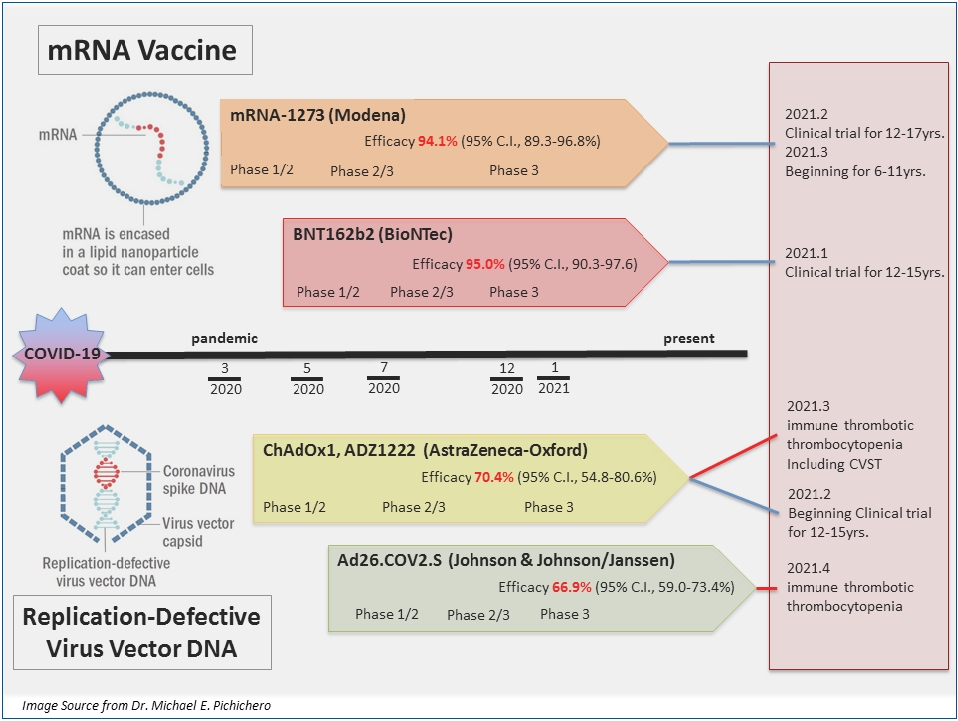
· The number of coronavirus disease 2019 cases has exponentially increased worldwide, and children ≤19 years old account for 11.0% of all confirmed cases.
· mRNA vaccines, BNT162b2 and mRNA-1273, and adenoviral vector vaccines, AZD1222 and Ad26.COV2.S, authorized for emergency use in the Emergency Use Listing of the World Health Organization are reviewed.
· Clinical trials of these vaccines have shown that they are safe and serious adverse reactions are rarely observed.
- School closures during the coronavirus disease 2019 outbreak
- Eun Young Cho, Young June Choe
- Clin Exp Pediatr. 2021;64(7):322-327. Published online May 31, 2021
-
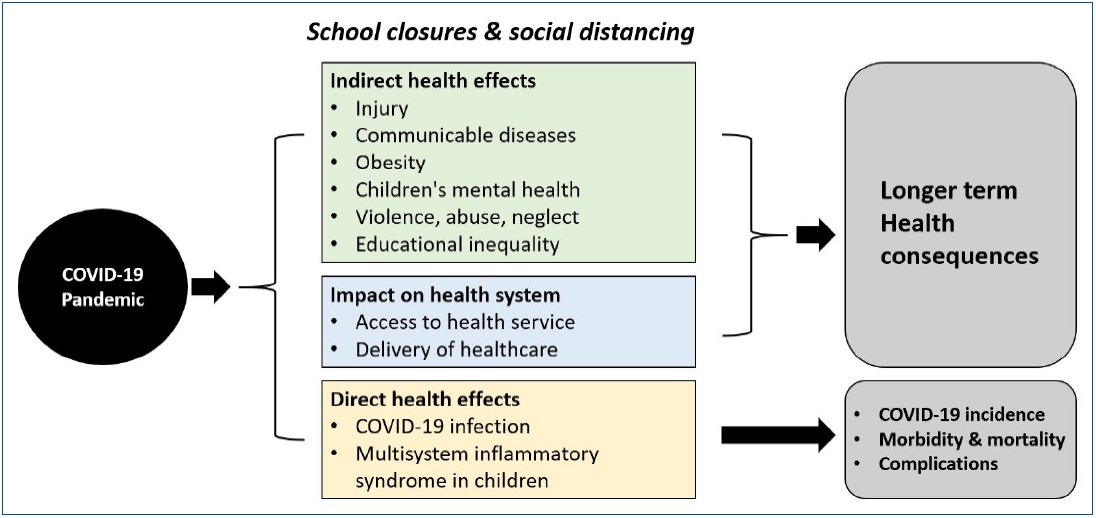
· Earlier modeling studies of the effects of school closures on severe acute respiratory syndrome coronavirus 2 were largely derived from the pandemic influenza model, resulting in conflicting implications.
· Observational findings suggest no clear effect of school closures on community transmission or overall mortality.
· School closures must be weighed against potential high social costs, which can also negatively affect children’s health.
- Neonatology (Perinatology)
- Neurodevelopmental outcomes of very low birth weight infants in the Neonatal Research Network of Japan: importance of neonatal intensive care unit graduate follow-up
- Yumi Kono; on behalf of the Neonatal Research Network of Japan
- Clin Exp Pediatr. 2021;64(7):313-321. Published online November 9, 2020
-
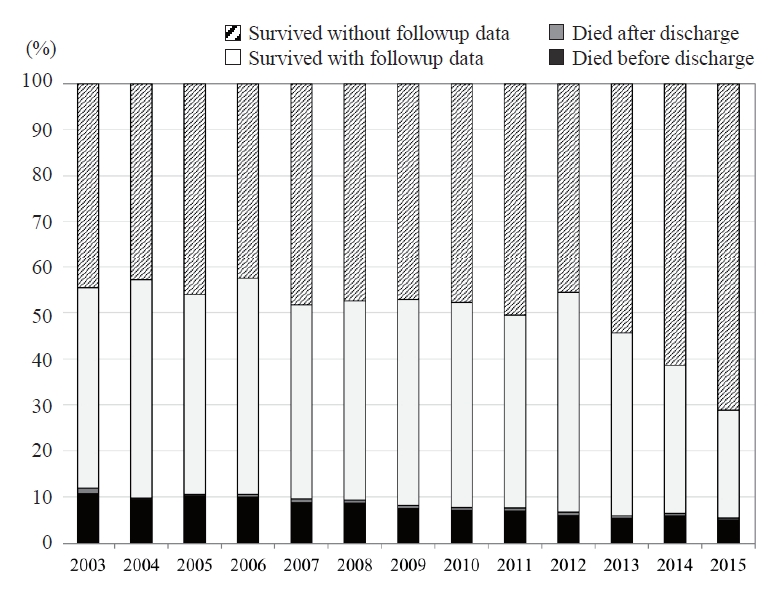
· Very low birth weight infants remain at high risk of developing neurodevelopmental impairments in early childhood.
· It is important to establish a network follow-up protocol and complete assessments with fewer dropouts to enable clarification of the outcomes of registered infants.
· All possible strategies should be employed to maintain good compliance after neonatal intensive care unit discharge.
- Clinical note
- Neurology
- Myelin oligodendrocyte glycoprotein antibody encephalitis following severe acute respiratory syndrome coronavirus 2 in a pediatric patient
- Nusrat Ahsan, Saba Jafarpour, Jonathan D. Santoro
- Clin Exp Pediatr. 2021;64(6):310-312. Published online February 1, 2021
-
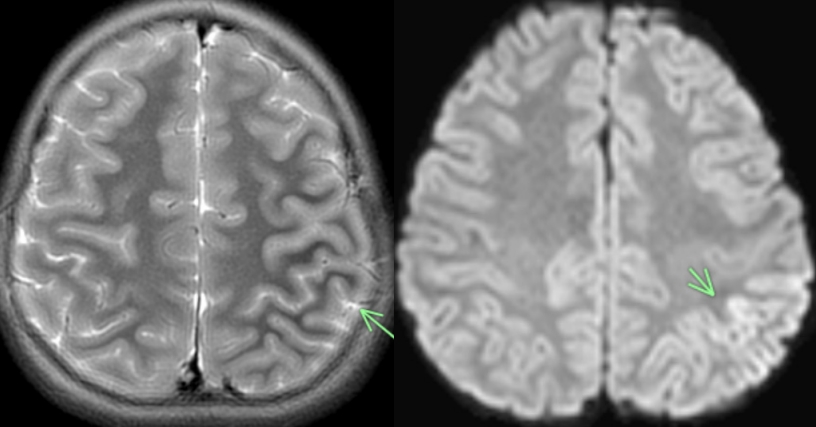
Question: Although neurologic complications have been reported during the acute phase of infection in children, less is known about the postinfectious phenomenon associated with the severe acute respiratory syndrome coronavirus 2 (SARSCoV-2) virus.
Finding: We present a case of a 7-year-old female with a prior asymptomatic infection with SARS-CoV-2 who subsequently developed encephalopathy and status epilepticus in association with myelin oligodendrocyte glycoprotein (MOG) antibody positivity.
Meaning: Here we present the first case of postinfectious of a MOG spectrum disorder associated with prior SARS-CoV-2 infection in a pediatric patient.
- Original Article
- Gastroenterology
- Celiac disease in children: Increasing prevalence and changing clinical presentations
- Hasan M. Isa, Eman Farid, Jaafar J. Makhlooq, Afaf M. Mohamed, Jumana G. Al-Arayedh, Fawzeya A. Alahmed, Shima Medani
- Clin Exp Pediatr. 2021;64(6):301-309. Published online October 17, 2020
-
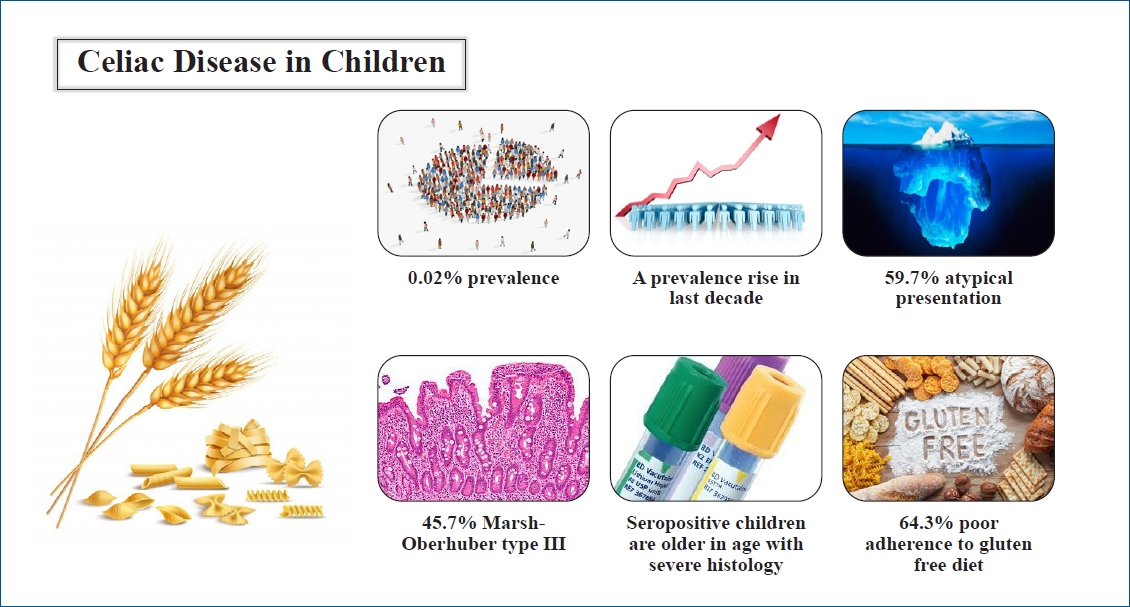
Question: What are the prevalence and clinical characteristics of celiac disease (CD) in children in Bahrain?
Finding: We found a significant increase in CD prevalence over the last decade (P=0.0001). A male predominance was noted. Atypical presentations were common. Most patients had poor adherence to a gluten-free diet.
Meaning: CD is an underdiagnosed condition. Atypical symptoms should be considered to prevent missing patients with CD.
- Infection
- Febrile urinary tract infection in children: changes in epidemiology, etiology, and antibiotic resistance patterns over a decade
- Woosuck Suh, Bi Na Kim, Hyun Mi Kang, Eun Ae Yang, Jung-Woo Rhim, Kyung-Yil Lee
- Clin Exp Pediatr. 2021;64(6):293-300. Published online October 14, 2020
-
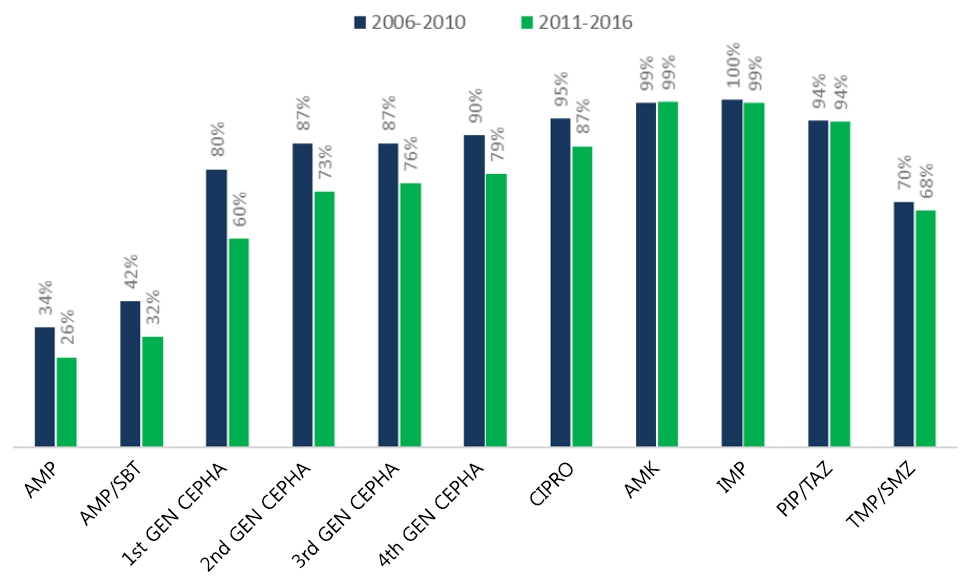
Question: How has the antibiotic susceptibility of urinary pathogens changed and what does it imply?
Finding: A yearly increase in multidrug-resistant and extended-spectrum β-lactamase (ESBL)–producing pathogens was observed. A higher recurrence rate was observed in cases of febrile urinary tract infection caused by ESBL producers in patients with underlying vesicoureteral reflux (VUR).
Meaning: The initial empirical antibiotic should reflect the changing susceptibility patterns and underlying VUR status.
- Other
- Association between pesticide and polychlorinated biphenyl exposure during pregnancy and autism spectrum disorder among children: a meta-analysis
- Fereshteh Mehri, Saeid Bashirian, Salman khazaei, Ensiyeh Jenabi
- Clin Exp Pediatr. 2021;64(6):286-292. Published online July 27, 2020
-

· This meta-analysis analyzed the association between pesticide and polychlorinated biphenyl (PCB) exposure during pregnancy and autism spectrum disorders (ASD) risk among children.
· A significant association was noted between PCB and pesticide exposure during pregnancy and ASD risk among children (odds ratio [OR], 1.80; 95% confidence interval [CI], 1.26–2.34 and OR, 1.20; 95% CI, 1.02–1.39), respectively.
· Pesticide and PCB exposure during pregnancy may affect ASD risk among children.
- Editorial
- Infection
- Should we prescribe carbapenem for treating febrile urinary tract infection caused by extended-spectrum β-lactamase-producing Enterobacteriaceae in children with vesicoureteral reflux?
- Ji Young Park
- Clin Exp Pediatr. 2021;64(6):284-285. Published online January 5, 2021
-
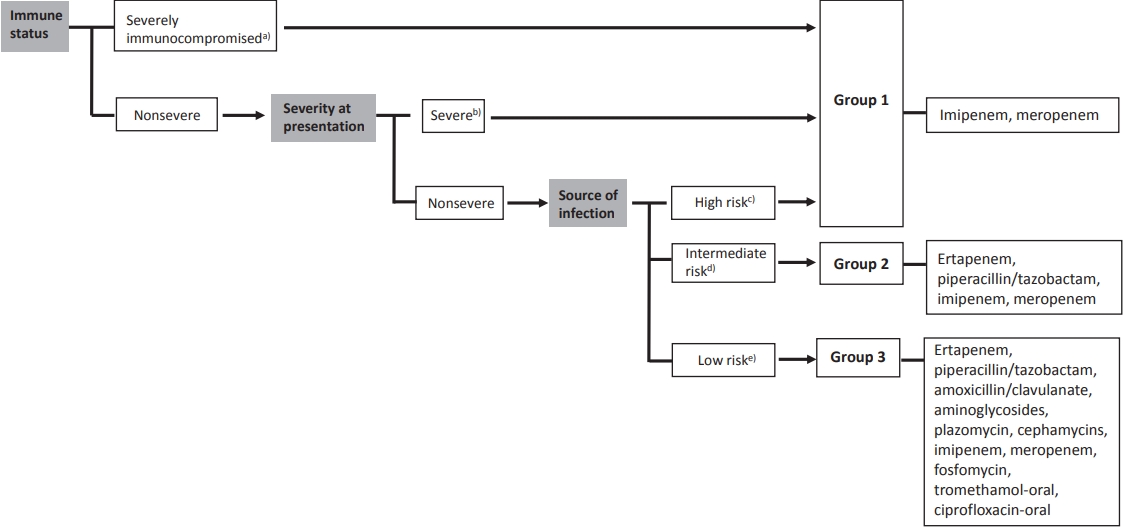
Recent studies are focused on the noninferiority of noncarbapenem therapy for the treatment of extended-spectrum β-lactamases producing Enterobacteriaceae infections to reduce the utilization of carbapenem.
- Neurology
- Psychogenic nonepileptic seizures; beyond differentiating from epileptic seizures
- Sang Ook Nam
- Clin Exp Pediatr. 2021;64(6):282-283. Published online November 12, 2020
-
- Infection
- Babies born to mothers positive for SARS-CoV-2 – Are they in danger?
- Joon Kee Lee
- Clin Exp Pediatr. 2021;64(6):280-281. Published online May 4, 2021
-
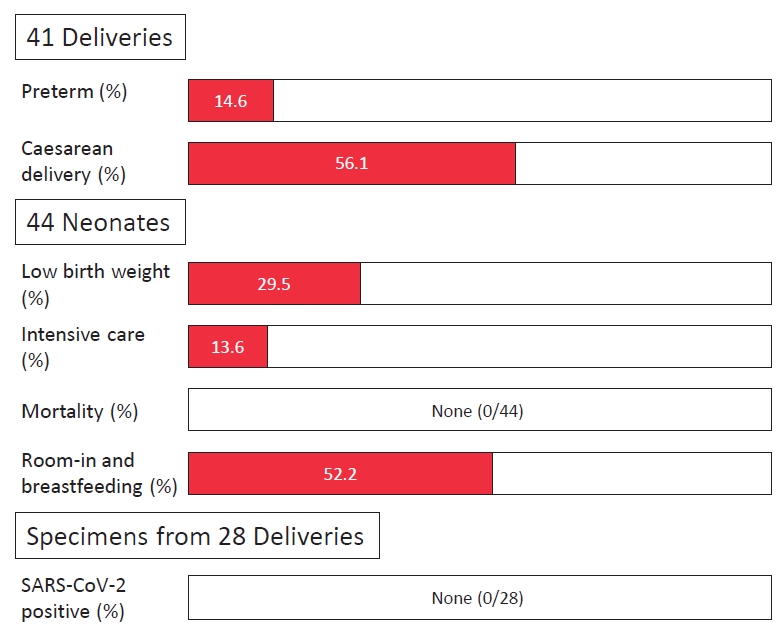
Concerns have arisen in the coronavirus disease 2019 (COVID-19) pandemic upon pregnancy and postnatal care starting from reproductive decision-making. To the utmost knowledge, reproductive decisions should not be based primarily on health-related COVID-19 concerns, as the possibility of vertical transmission is negligible and the perinatal outcome is generally not poor compared to pregnancies without COVID-19, as long as infection control measures are well kept.
- Review Article
- Cardiology
- Application of CRISPR-Cas9 gene editing for congenital heart disease
- Heeyoung Seok, Rui Deng, Douglas B. Cowan, Da-Zhi Wang
- Clin Exp Pediatr. 2021;64(6):269-279. Published online March 2, 2021
-
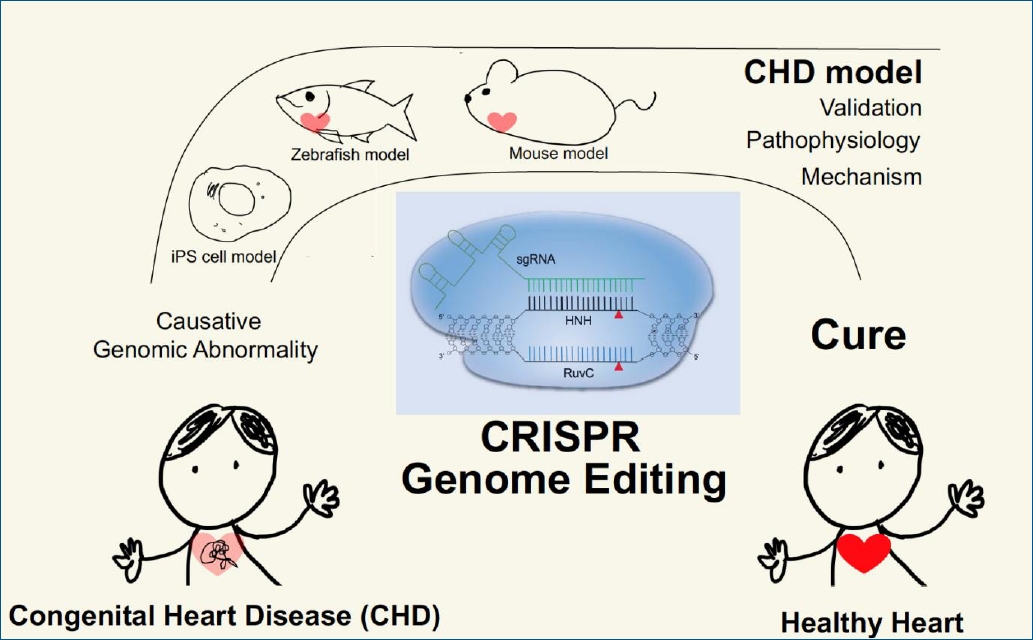
Clustered regularly interspaced short palindromic repeats and CRISPR-associated protein 9 (CRISPR-Cas9) system has made a big step in the genome editing which still requires technical developments for the efficient applications in the many fields including congenital heart diseases (CHDs), closely related to the genomic abnormality. In this review, we tried to cover the most updated researches of CRISPR-Cas9 in the CHDs to understand the current technologies, eventually becoming therapeutic bases for the CHD patients.
- Gastroenterology
- Causes of acute gastroenteritis in Korean children between 2004 and 2019
- Eell Ryoo
- Clin Exp Pediatr. 2021;64(6):260-268. Published online September 18, 2020
-

· Norovirus is the most common virus in Korean children with acute gastroenteritis.
· Escherichia coli and Salmonella spp. are the most common cause of bacterial gastroenteritis in Korean children, with a detection rate of 3%–20%.
· Uncommon bacterial and parasitic gastroenteritis require attention because of increasing international exchange and overseas travel.
- Neurology
- Myths and truths about pediatric psychogenic nonepileptic seizures
- Jung Sook Yeom, Heather Bernard, Sookyong Koh
- Clin Exp Pediatr. 2021;64(6):251-259. Published online October 17, 2020
-
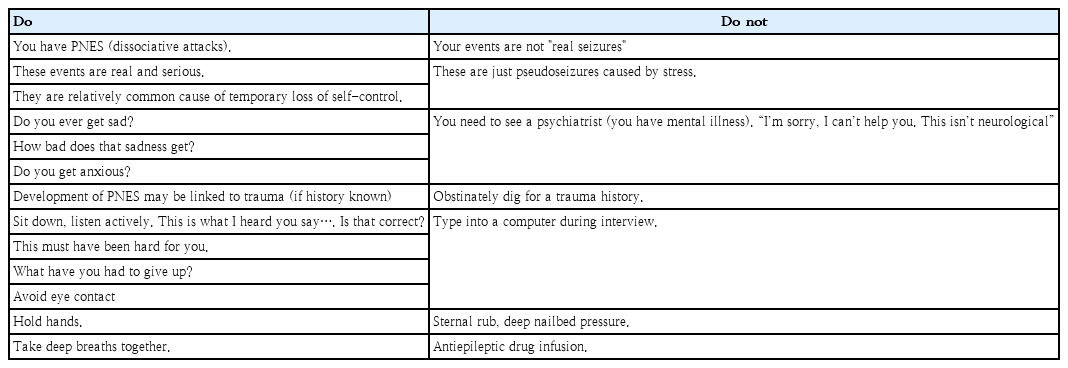
• Psychogenic non-epileptic seizures (PNES) are events that look like epileptic seizures but are not caused by abnormal electrical discharges.
• PNES are a manifestation of psychological and emotional distress.
• Treatment for PNES does not begin with the psychological intervention but starts with the diagnosis and how the diagnosis is delivered.
• A multifactorial biopsychosocial process and a neurobiological review are both essential components when treating PNES
-

-
-

-

-
Impact Factor3.2
-
8.02023CiteScore94nd percentilePowered by







